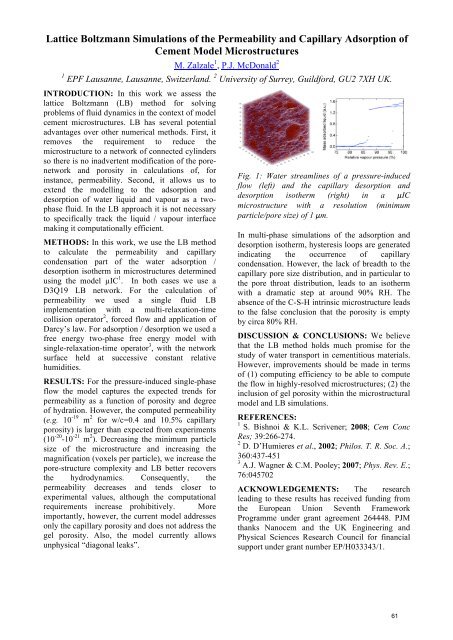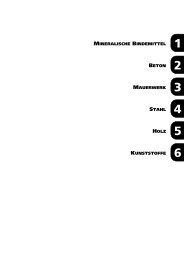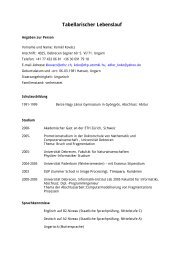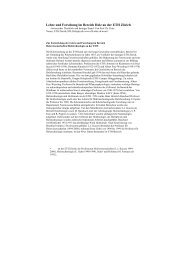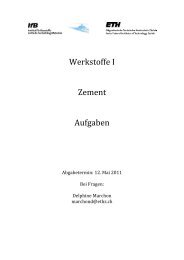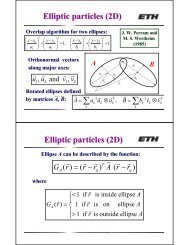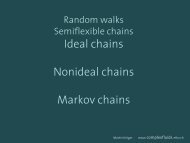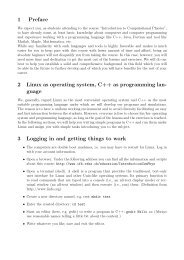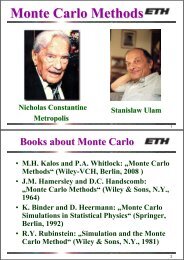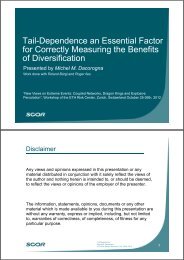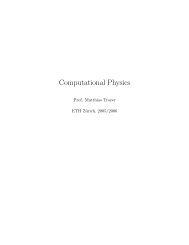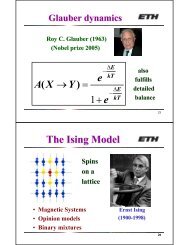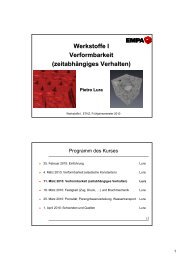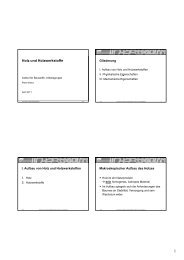Here - Institute for Building Materials - ETH Zürich
Here - Institute for Building Materials - ETH Zürich
Here - Institute for Building Materials - ETH Zürich
Create successful ePaper yourself
Turn your PDF publications into a flip-book with our unique Google optimized e-Paper software.
Lattice Boltzmann Simulations of the Permeability and Capillary Adsorption ofCement Model MicrostructuresM. Zalzale 1 , P.J. McDonald 21 EPF Lausanne, Lausanne, Switzerland. 2 University of Surrey, Guild<strong>for</strong>d, GU2 7XH UK.INTRODUCTION: In this work we assess thelattice Boltzmann (LB) method <strong>for</strong> solvingproblems of fluid dynamics in the context of modelcement microstructures. LB has several potentialadvantages over other numerical methods. First, itremoves the requirement to reduce themicrostructure to a network of connected cylindersso there is no inadvertent modification of the porenetworkand porosity in calculations of, <strong>for</strong>instance, permeability. Second, it allows us toextend the modelling to the adsorption anddesorption of water liquid and vapour as a twophasefluid. In the LB approach it is not necessaryto specifically track the liquid / vapour interfacemaking it computationally efficient.M<strong>ETH</strong>ODS: In this work, we use the LB methodto calculate the permeability and capillarycondensation part of the water adsorption /desorption isotherm in microstructures determinedusing the model µIC 1 . In both cases we use aD3Q19 LB network. For the calculation ofpermeability we used a single fluid LBimplementation with a multi-relaxation-timecollision operator 2 , <strong>for</strong>ced flow and application ofDarcy’s law. For adsorption / desorption we used afree energy two-phase free energy model withsingle-relaxation-time operator 3 , with the networksurface held at successive constant relativehumidities.RESULTS: For the pressure-induced single-phaseflow the model captures the expected trends <strong>for</strong>permeability as a function of porosity and degreeof hydration. However, the computed permeability(e.g. 10 -19 m 2 <strong>for</strong> w/c=0.4 and 10.5% capillaryporosity) is larger than expected from experiments(10 -20 -10 -21 m 2 ). Decreasing the minimum particlesize of the microstructure and increasing themagnification (voxels per particle), we increase thepore-structure complexity and LB better recoversthe hydrodynamics. Consequently, thepermeability decreases and tends closer toexperimental values, although the computationalrequirements increase prohibitively. Moreimportantly, however, the current model addressesonly the capillary porosity and does not address thegel porosity. Also, the model currently allowsunphysical “diagonal leaks”.Fig. 1: Water streamlines of a pressure-inducedflow (left) and the capillary desorption anddesorption isotherm (right) in a µICmicrostructure with a resolution (minimumparticle/pore size) of 1 µm.In multi-phase simulations of the adsorption anddesorption isotherm, hysteresis loops are generatedindicating the occurrence of capillarycondensation. However, the lack of breadth to thecapillary pore size distribution, and in particular tothe pore throat distribution, leads to an isothermwith a dramatic step at around 90% RH. Theabsence of the C-S-H intrinsic microstructure leadsto the false conclusion that the porosity is emptyby circa 80% RH.DISCUSSION & CONCLUSIONS: We believethat the LB method holds much promise <strong>for</strong> thestudy of water transport in cementitious materials.However, improvements should be made in termsof (1) computing efficiency to be able to computethe flow in highly-resolved microstructures; (2) theinclusion of gel porosity within the microstructuralmodel and LB simulations.REFERENCES:1S. Bishnoi & K.L. Scrivener; 2008; Cem ConcRes; 39:266-274.2 D. D’Humieres et al., 2002; Philos. T. R. Soc. A.;360:437-4513 A.J. Wagner & C.M. Pooley; 2007; Phys. Rev. E.;76:045702ACKNOWLEDGEMENTS: The researchleading to these results has received funding fromthe European Union Seventh FrameworkProgramme under grant agreement 264448. PJMthanks Nanocem and the UK Engineering andPhysical Sciences Research Council <strong>for</strong> financialsupport under grant number EP/H033343/1.61


